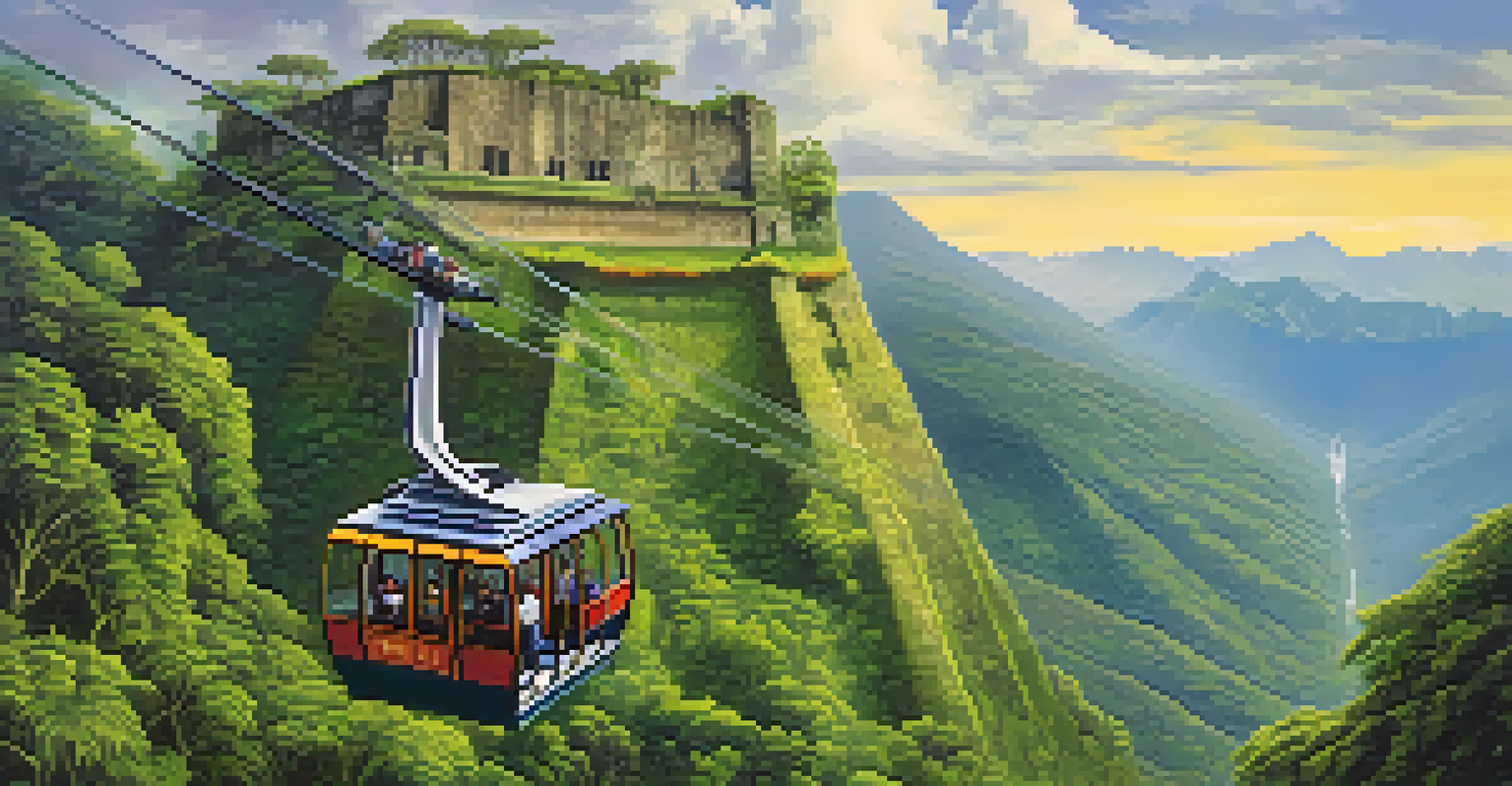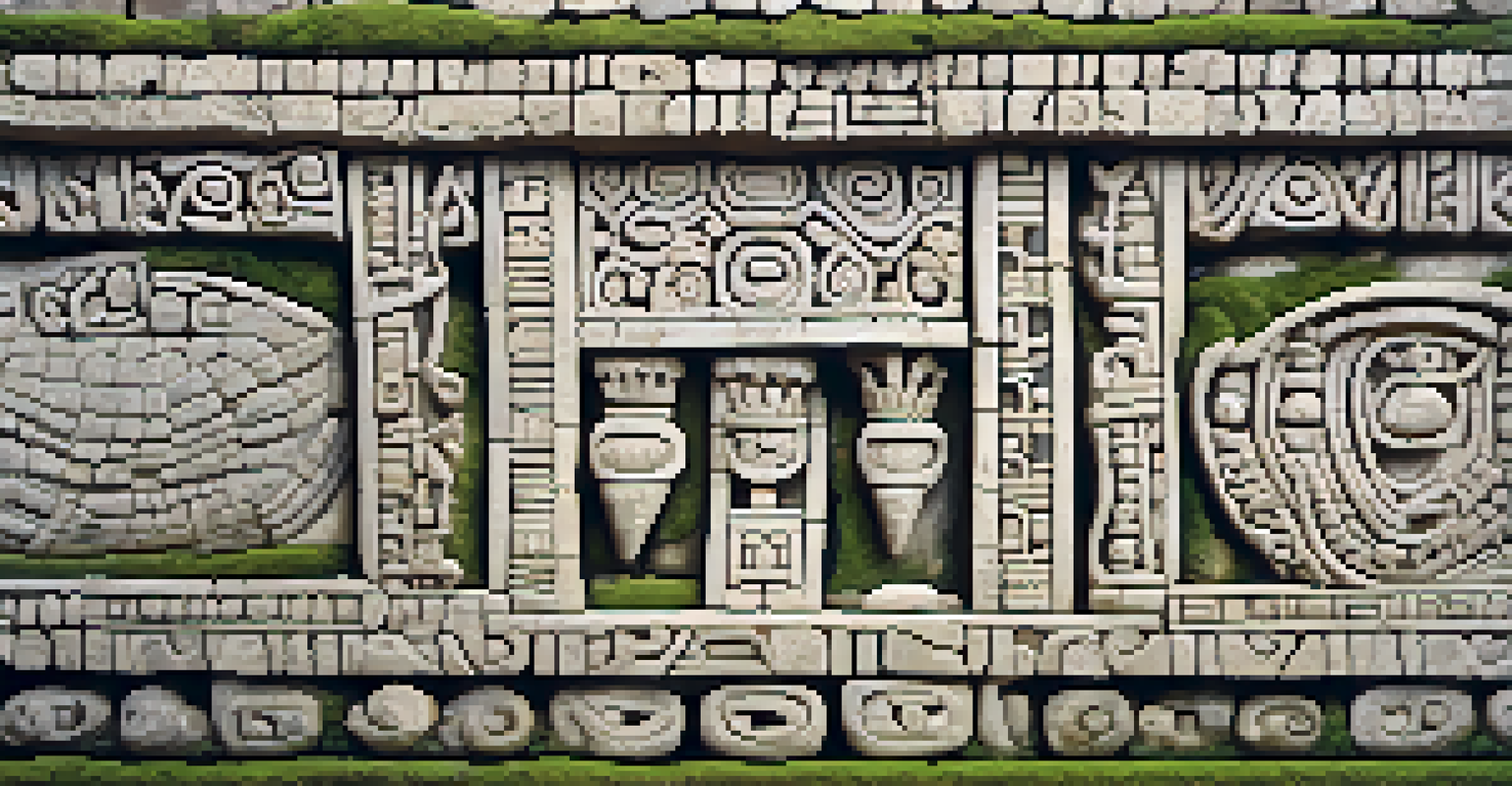Kuelap: The Fortress of the Cloud People in Northern Peru

An Overview of Kuelap: A Cloud Fortress
Kuelap is an astounding archaeological site located in Northern Peru, often overshadowed by Machu Picchu. This ancient fortress, built by the Chachapoya culture, is perched atop a mountain at an elevation of around 3,000 meters. It spans over 580 meters long and 110 meters wide, showcasing impressive stone walls that reach heights of up to 20 meters in some areas. Often referred to as the 'Fortress of the Cloud People,' Kuelap offers a unique glimpse into a civilization that thrived in the cloud forests of the Andes.
The past is never dead. It's not even past.
The site is not just impressive due to its size; its strategic location on a mountain ridge also provided natural protection against invaders. The Chachapoya people, known as the 'Warriors of the Clouds,' utilized this fortress for defense and as a ceremonial center. The surrounding misty landscape adds an ethereal quality to Kuelap, making it feel like a place suspended between the earth and the sky, truly deserving of its name.
Visitors to Kuelap can explore its massive stone structures, including circular buildings and intricate stone carvings that hint at the advanced skills of the Chachapoya. The site is a testament to the ingenuity and resilience of a people who adapted to their challenging environment. As you wander through the ruins, it’s easy to imagine the vibrant life that once thrived here, surrounded by the beauty of Peru's highlands.
The Journey to Kuelap: A Scenic Adventure
Reaching Kuelap is an adventure in itself, with travelers typically starting their journey from the town of Chachapoyas. From there, the trip involves a scenic drive through lush landscapes and winding mountain roads, offering breathtaking views of the Andes. The excitement builds as the clouds roll in, shrouding the mountains in mystery and beauty. This journey is not just about the destination; it's a chance to soak in the rich biodiversity and stunning scenery of northern Peru.

Upon arriving at the base of the fortress, visitors can take a cable car that glides above the treetops, offering a bird's-eye view of the surrounding cloud forest. This modern touch contrasts beautifully with the ancient ruins, allowing for a unique perspective of the historical site. The cable car ride is both exhilarating and serene, making it a memorable part of the journey.
Kuelap: A Hidden Historical Gem
Kuelap, an ancient fortress in Peru, showcases the impressive architecture and cultural significance of the Chachapoya civilization.
As you ascend, the anticipation of exploring Kuelap builds, and you can't help but feel a connection to the past. Once you reach the fortress, the sweeping views and the majestic ruins will leave you in awe. It's a reminder of how humans have created remarkable structures that withstand the test of time, set against the backdrop of nature's grandeur.
The Architecture of Kuelap: A Marvel of Engineering
Kuelap's architecture is a remarkable feat, showcasing the advanced engineering skills of the Chachapoya civilization. The massive stone walls, made from limestone, were constructed without mortar, demonstrating the precision and skill of its builders. This technique not only added to the fortress's strength but also allowed it to endure centuries of weathering and seismic activity. The architecture is a testament to the ingenuity of a culture that thrived in a challenging environment.
Those who do not remember the past are condemned to repeat it.
The fortress's circular buildings, known as 'ushnus,' served various purposes, including ceremonial functions and living quarters. Many of these structures feature intricately carved stonework, depicting various animals and geometric patterns that reflect the Chachapoya's beliefs and values. These carvings provide insight into the spiritual and cultural aspects of their society, making Kuelap a significant site for understanding their way of life.
Additionally, the layout of Kuelap is strategic, allowing for efficient movement and defense. The walls not only encircle the main structures but also create a series of terraces and pathways that connect different areas of the fortress. This thoughtful design emphasizes the importance of community and connection within the Chachapoya culture, highlighting how their architectural choices were deeply intertwined with their social structure.
The Cultural Significance of Kuelap
Kuelap is not just an architectural wonder; it is also a vital piece of cultural heritage for the Chachapoya people. The site served as a center for religious and social activities, playing a significant role in the community's identity. The remnants of ceremonial platforms and altars indicate that Kuelap was a hub for rituals and gatherings, reflecting the spiritual life of its inhabitants. Today, it stands as a symbol of resilience and cultural pride for the descendants of the Chachapoya.
Moreover, Kuelap's discovery and subsequent excavation have sparked interest in the Chachapoya culture, prompting efforts to preserve and promote their history. As more people visit Kuelap, there is a growing appreciation for the contributions of this civilization to Peru's rich tapestry of cultures. The site acts as a bridge between the past and present, reminding us of the diverse histories that shape modern Peru.
Scenic Journey to Kuelap
The trip to Kuelap offers breathtaking views and a unique cable car ride, enhancing the overall adventure of visiting this archaeological site.
The ongoing research and exploration of Kuelap have also unveiled new insights into the Chachapoya way of life, including their farming practices and trade networks. Understanding these aspects enriches our knowledge of how ancient societies adapted to their environments. By visiting Kuelap, travelers not only witness stunning architecture but also engage with a narrative of survival, adaptation, and cultural significance that continues to resonate today.
Flora and Fauna: Biodiversity Surrounding Kuelap
The region surrounding Kuelap is a biodiversity hotspot, home to a wide array of flora and fauna that thrive in the cloud forest ecosystem. Visitors can expect to encounter various plant species, from towering trees to vibrant orchids, each playing a crucial role in the delicate balance of this environment. The unique climate, characterized by high humidity and cool temperatures, fosters a rich tapestry of life that enhances the overall experience of visiting Kuelap.
Wildlife enthusiasts may spot a variety of bird species, including colorful toucans and hummingbirds, flitting through the trees. The area is also home to mammals like the Andean bear and various species of monkeys, making it a haven for nature lovers. The combination of Kuelap's historical significance and the surrounding natural beauty creates a captivating atmosphere that draws visitors from around the world.
Exploring the biodiversity around Kuelap adds another layer to the adventure, as it invites travelers to appreciate the interconnectedness of history and nature. Guided tours often highlight the importance of conservation efforts in the region, emphasizing the need to protect these ecosystems for future generations. By respecting and preserving the natural surroundings, visitors can ensure that the story of Kuelap continues to thrive alongside the rich biodiversity of the cloud forests.
Visiting Kuelap: Tips for an Unforgettable Experience
If you're planning a visit to Kuelap, preparation can enhance your experience significantly. Start by considering the best time to visit; the dry season from May to September is generally recommended for clearer skies and more comfortable hiking conditions. Early mornings are ideal for exploring the fortress, as the mist often creates a mystical ambiance and fewer crowds allow for a more personal experience with the ruins.
Comfortable footwear is a must, as the terrain can be uneven and involves a bit of walking. Don't forget to bring layers; the temperature can fluctuate, especially in the higher altitudes. Additionally, packing water and snacks will keep your energy up as you wander through the fascinating site, soaking in the history and surrounding beauty.
Preservation Efforts for Kuelap
As tourism increases, sustainable practices and community involvement are vital for preserving Kuelap's historical and environmental integrity.
Lastly, consider hiring a local guide who can provide insights into Kuelap's history and significance, enriching your visit with stories that bring the past to life. Engaging with the culture and learning from those with deep connections to the land adds a valuable dimension to your adventure. With the right preparations, your journey to Kuelap will surely be a memorable exploration of ancient history and natural wonder.
The Future of Kuelap: Preservation and Tourism
As interest in Kuelap grows, so does the importance of preserving this remarkable site for future generations. Efforts are underway to maintain the integrity of the fortress while accommodating increasing tourist numbers. Sustainable tourism practices are crucial to ensure that Kuelap can be appreciated without compromising its historical and environmental significance. This balance is key to protecting both the ruins and the surrounding ecosystem.
Local communities are becoming increasingly involved in these preservation efforts, recognizing the value of Kuelap not only as a historical site but also as a source of economic opportunity. By promoting responsible tourism, residents can benefit from visitors while simultaneously safeguarding their cultural heritage. This partnership fosters a sense of pride and ownership among the local population, ensuring that the story of Kuelap continues to be told.

Looking ahead, the future of Kuelap holds exciting possibilities. As archaeological research continues, new discoveries may shed light on the Chachapoya civilization and their way of life. Moreover, initiatives to enhance visitor experiences, such as improved accessibility and educational programs, can further enrich interactions with this ancient fortress. Kuelap is not just a destination; it's a living testament to a culture that deserves to be celebrated and preserved.